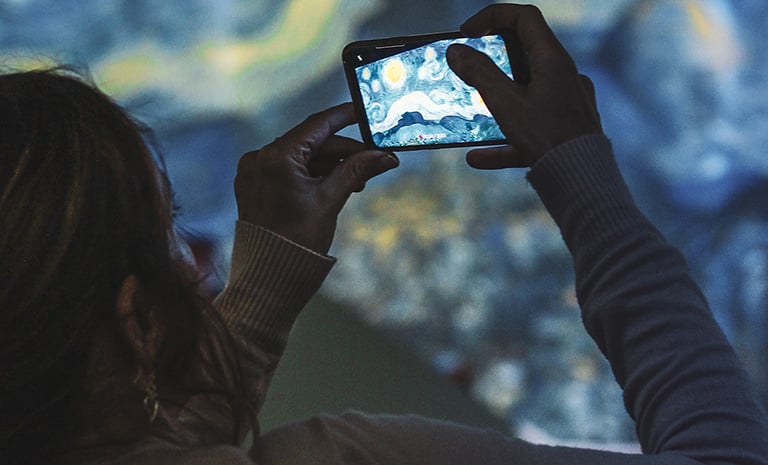Arts and Culture
Business Strategy
Digital
Technology
Article
Insights & Innovation
9cfc54ec-feb3-4909-92c0-ab792eb02dc5
7 min
https://edge.sitecorecloud.io/tessituraneab9a-tessiturane5642-staging-5396/media/Images/Stock-Photography/tess_team_768x465.jpg?h=465&iar=0&w=768
Surprising barriers that keep your team from innovating
What holds you back?

, Tessitura
What holds you back?
4/2/2024
7 min
“Give a good idea to a mediocre team, and they will screw it up. But give a mediocre idea to a great team, and they will either fix it or come up with something better.
“If you get the team right, chances are they’ll get the ideas right.”
That’s advice from Ed Catmull, co-founder of Pixar and former president of Walt Disney Animation Studios. In his book Creativity, Inc., Catmull explores what he describes as the unseen forces that prevent many organizations from being more innovative.
Catmull subscribes to the widely accepted belief that innovation is a team sport. Studies show that, in general, teams innovate faster, generate stronger results and mitigate failure better than individuals working alone.
Yet not all teams are created equal. So, what can you do to build more effective, more creative teams?
Following are three surprising barriers that may be holding your organization back.
Innovation is a team sport.
Barrier #1: Your team doesn’t feel safe.
In 2012, Google began a multiyear investigation to learn what made some of its teams more productive than others. They looked at previous research, personal and behavioral demographics, overlapping team membership and performance data. But these factors had minimal impact. What they discovered instead was that the single most important characteristic in determining how a team performs was the level of psychological safety exhibited by its members.
Psychological safety is a measure of how comfortable team members feel taking risks and being vulnerable with one another. In safe environments, people are more likely to engage in open and honest communication. They don’t fear embarrassment or retribution. They’re more willing to share diverse perspectives and admit mistakes. They collaborate on shared goals. And they exhibit empathy and sensitivity toward their colleagues.
Teams with high psychological safety consistently outperform others. Google even found that who is on the team is less important than how the team functions and the level of collective team trust.
What can you do to foster team safety? If you’re in a management position, whether overseeing people or projects, one way to cultivate safety is through inclusive leadership. Inclusive leaders embrace active learning, ensure equal opportunity and model authenticity.
But no matter your position, you can play a role in encouraging safety in every team in which you participate. Practice the following behaviors.
- Communicate openly and authentically. Encourage team members to express themselves, ask questions, voice concerns and share ideas without repercussions. Open communication builds trust and makes people feel valued.
- Demonstrate empathy. Listen actively to understand and show compassion. This builds deeper, more personal connections among team members.
- Shower recognition and appreciation. Celebrate wins, big and small. Recognition boosts team morale and reinforces positive behavior.
- Encourage risk-taking. Create an environment where calculated risks are encouraged and where failures are seen as learning opportunities.
- Lead by example. Provide a roadmap for colleagues through your behavior. Model the actions you want others to take.
Teams with high psychological safety consistently outperform others.
Barrier #2: Your team isn’t diverse.
Diversity is another key contributor to innovation. Diverse teams are consistently more creative than homogeneous ones.
Diversity extends beyond demographic characteristics, though those play a valuable role, too. Diversity also includes a variety of perspectives, backgrounds and professional experiences.
There are several reasons diversity increases innovation.
- Diverse teams counteract groupthink. When a wider range of perspectives is considered, groups are less susceptible to conformity.
- Diversity improves decisions. Diverse teams tend to be more critical in their analysis and more effective in identifying risks and opportunities.
- Diversity produces growth. Diversity fosters a culture of continuous learning. It exposes team members to different and often unfamiliar experiences.
Diverse teams are more creative.
Barrier #3: Your team doesn’t protect new ideas.
If we’re honest, many of our organizations — and, by extension, many of us — actively avoid risk. We may even develop intricate, complex processes to prevent it. Trying something new leads to unknown results. The inability to predict an outcome can feel scarier than living with the status quo.
There are also interpersonal and emotional challenges. On our worst days, each of us can be pessimistic, jaded or skeptical of the unknown.
That makes new ideas fragile. Many are abandoned before they have time to fully form, yet alone flourish. Yet, without new ideas, innovation is impossible.
We must work to minimize barriers and maximize support for new ideas so they can be nurtured. At Pixar, Catmull described this process as protecting the new. When you protect new ideas, he said, “you protect the future, not the past.”
“Protect the future, not the past.”
Protecting new ideas doesn’t mean eliminating criticism or constructive feedback. But it does mean giving new ideas time to mature to ensure they’re ready for in-depth evaluation. It means safeguarding new ideas from negative influences that hinder their development.
Do these issues sound familiar? Do you face one or more of these challenges in your organization?
The good news is that even small changes can make a big difference in overcoming these barriers. When your teams are more diverse, your team members feel safer and they work hard to protect new ideas, you’ll find it easier for your organization to embrace their creativity and to innovate more effectively.
Topics
Arts & Culture
/Business Strategy
/Digital
/Technology

Beyond the buzz
Arts & Culture / BI & Analytics / Business Strategy / Digital / Technology
What I wish someone had told me about digital transformation

Audience behaviors are changing. Are you keeping up?
Arts & Culture / BI & Analytics / Business Strategy / Digital / Technology
Leveraging customer networks in a digital world

Putting it together
Arts & Culture / BI & Analytics / Business Strategy / Digital / Technology
How one museum brings digital transformation to life
